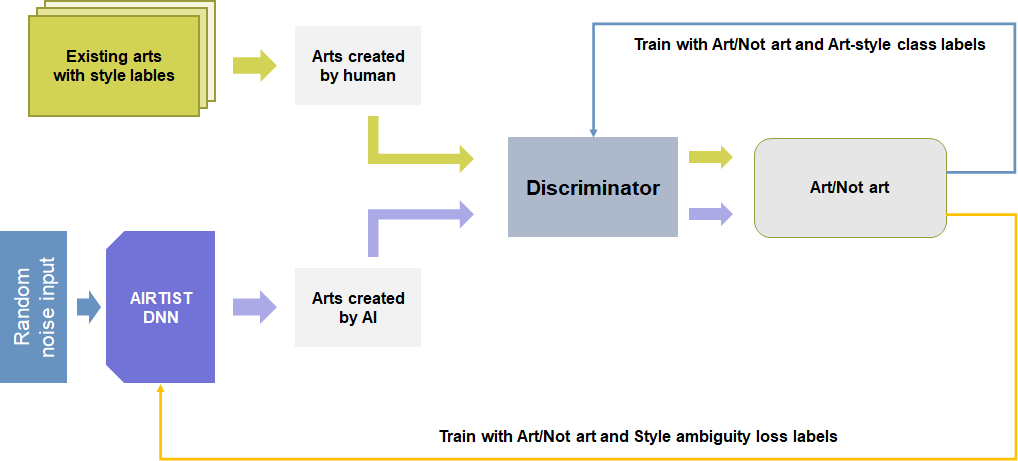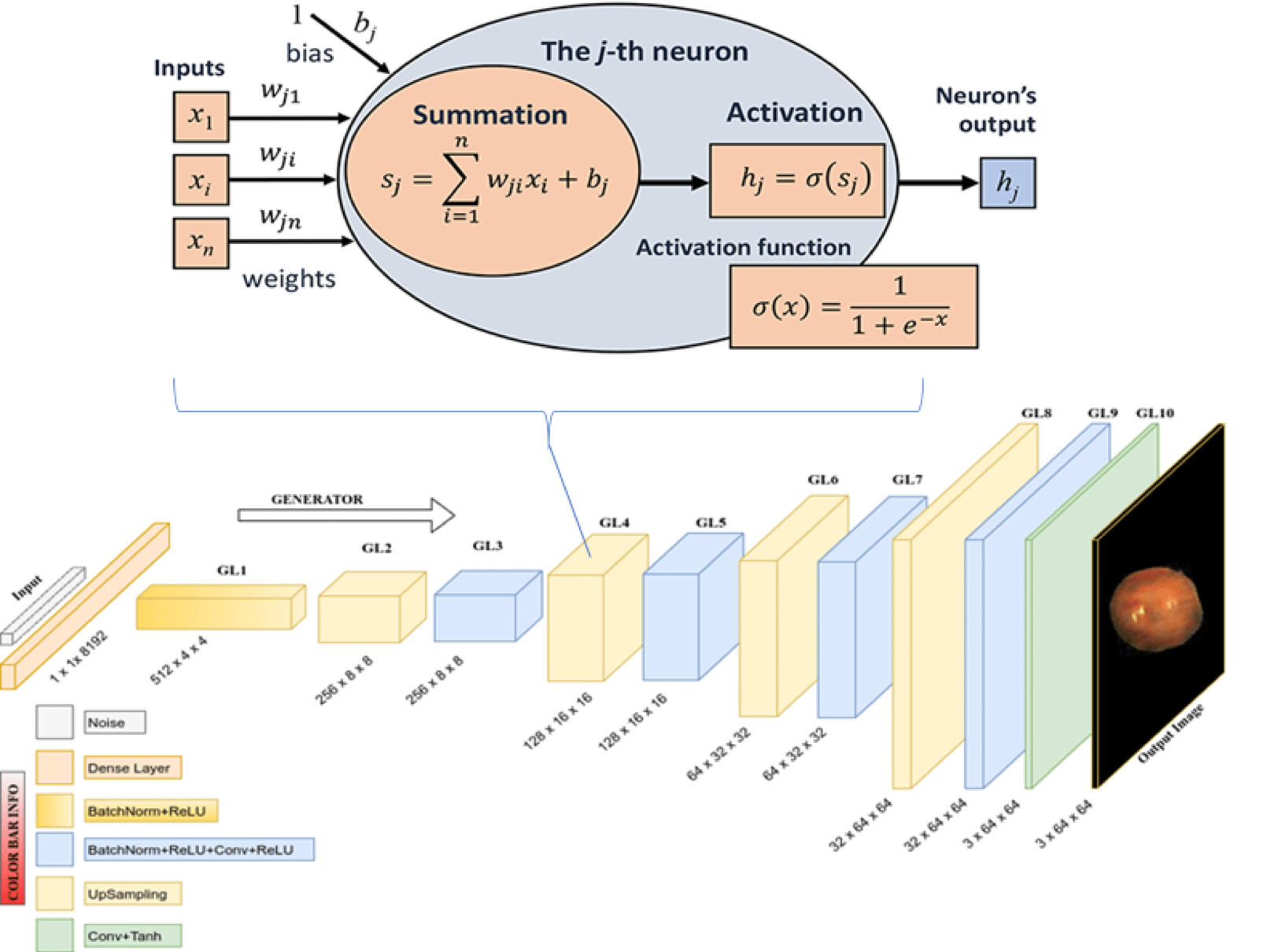AIRTIST—Matrix’s Great Venture into AI Art (3/4)
How to create an AI artist?
To create an AI artist is essentially to train a DNN, which uses the same methods as training generative adversarial networks. Here we need two deep neural networks. One is called AIRTIST-DNN and imitates the creative process of artists. The other is called Discriminator and serves to improve the quality of the art. The relationship between the two networks is illustrated below. On the bottom left corner is AIRTIST-DNN, and Discriminator is in the middle. An AI artist needs to be trained before it can create art. The two networks are deployed on the Matrix Mainnet using distributed computing, and we need a group of artworks of a certain style. Before training begins, the weighting of the two networks are set to random. AIRTIST-DNN is built using a generative model, which can mirror a set of random numbers onto an artwork. Of course, in the beginning, the results may not look like art by any means. But in the meantime, Discriminator will also start training, using preselected art samples and works created by AIRTIST-DNN as sample data. The target of training is to be able to tell which one is the real artwork and which one is generated by AI. In the process, the weighting of the two networks is constantly readjusted to get the statistical distribution of AIRTIST-DNN-generated data as close as possible to that of real art. This training process can be seen as a game where two players compete with each other. The quality of generated works will match up to real ones when Nash equilibrium is reached.

How to create AI artworks using AI artists?
Let’s use the process of AI artists creating a painting as an example to illustrate how AIRTIST works.
A fully trained AIRTIST deep neural network will have multiple layers of neurons, each with large quantities of weighting parameters, which reflects the statistical distribution of specific artworks. To create an artwork, first, we need to enter a theme. After semantic analysis, the theme will be converted into a group of preliminary parameters to be sent to AIRTIST-DNN. After the data input, neurons of the hidden layer will calculate the data and weighting parameters level by level. Finally, the output layer will receive the final result, which is the end product of the AI artwork. In fact, a deep neural network is an all-powerful tool that can mirror data input onto any data output. The process of training is to adjust the mirroring function of the network to match the target art style, and the creative process is to generate a set of data (i.e. the artwork) based on the distribution style reflected by network topology and weighting parameters. As a deep neural network will have millions of weighting parameters, there will be a degree of randomness in the reflection of specific distributions. This randomness is a manifestation of the artist’s free will.

After a work has been created, it is authenticated through blockchain and saved on the distributed storage to be a digital asset.

AIRTIST—Matrix’s Great Venture into AI Art (1/4)
AIRTIST—Matrix’s Great Venture into AI Art (2/4)
AIRTIST—Matrix’s Great Venture into AI Art (4/4)
Twitter: https://twitter.com/MatrixAINetwork/status/1523924118155931649?s=20
Medium: https://matrixainetwork.medium.com/airtist-matrixs-great-venture-into-ai-art-3-4-e932f9eedcd3